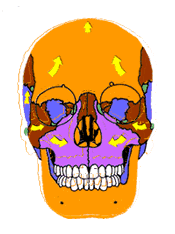Nasal Specific Technique

Dr. Raymond Tolmos, a holistic chiropractor in Miami, has been performing nasal specific technique in order to help patients who suffer from chronic breathing issues, chronic rhinitis, allergies, and trauma to their nose which may have collapsed the airway. Dr. Tolmos’s patients have reported better breathing, improved sense of smell, and even decreased snoring! Call us today if you have more questions about nasal specific technique.
What is Nasal Specific Technique?
Nasal Specific/Bilateral Nasal Specific (BNS) is a controlled approach and technique that works to unwind the body and help it return to a more optimum function by adjusting the cranial plates of the skull and relieving pinned up pressure that affects the nervous system and reestablishes the flow of cerebrospinal fluid to the body and the proper flow of blood to the brain.
Nasal Specific uses finger cots, affixed/tied to a blood pressure bulb (a sphygmomanometer) to deliver an even and effective controlled force of pressure. The finger cot portion of this device is lubricated. The patient breaths out through their nose and the finger cot is inserted into one of the six nasal passages, being three on each side. These nasal passages are stair stacked on top of each other. The finger cot/balloon is first inserted into the lower nasal passageways, one on each sides of the nose. This is done to keep facial, pressure, and symmetrical balance and optimize the benefits of this technique. It is then repeated in the middle passageway’s, then the top passageway. Then this process is repeated in the lower nasal passageway to help complete the full effect of nasal enhancement and no doubt do to the fact that the nasal passageways are stair stacked and widening the upper two nasal pathways indeed may compress the lower nasal passageway somewhat. Therefore, the lower nasal passageways are repeated to completely stimulate and give the full enhancement effect.
When the finger cot/balloon is slid into the nasal passageway the patient is asked to breath out through their nose, this allows access and proper placement of the balloon into the passageway. The balloon is gently tucked in around the outer edges of the nostril with a flat tooth pick to ensure that no outward bulging of the balloon occurs when it is inflated. The nose is lightly compressed around the valve of the pressure bulb, so that no air can escape. The patient then takes a deep breath in and holds it. By taking the breath in it expands the joints/membranes of the cranial plates. While the patient is holding their breath the practitioner quickly and gently inflates the finger cot/balloon with two to four quick hand pumps/squeezes of the pressure bulb. Squeezing the pressure bulb applies air into the finger cot/balloon. As this air pressure becomes greater it pushes on the walls of the nasal passageways, eventually it squeezes its way through to the back of the throat. The practitioner then quickly releases this pressure via the stem on the valve of the pressure bulb. This process takes one to three seconds.


